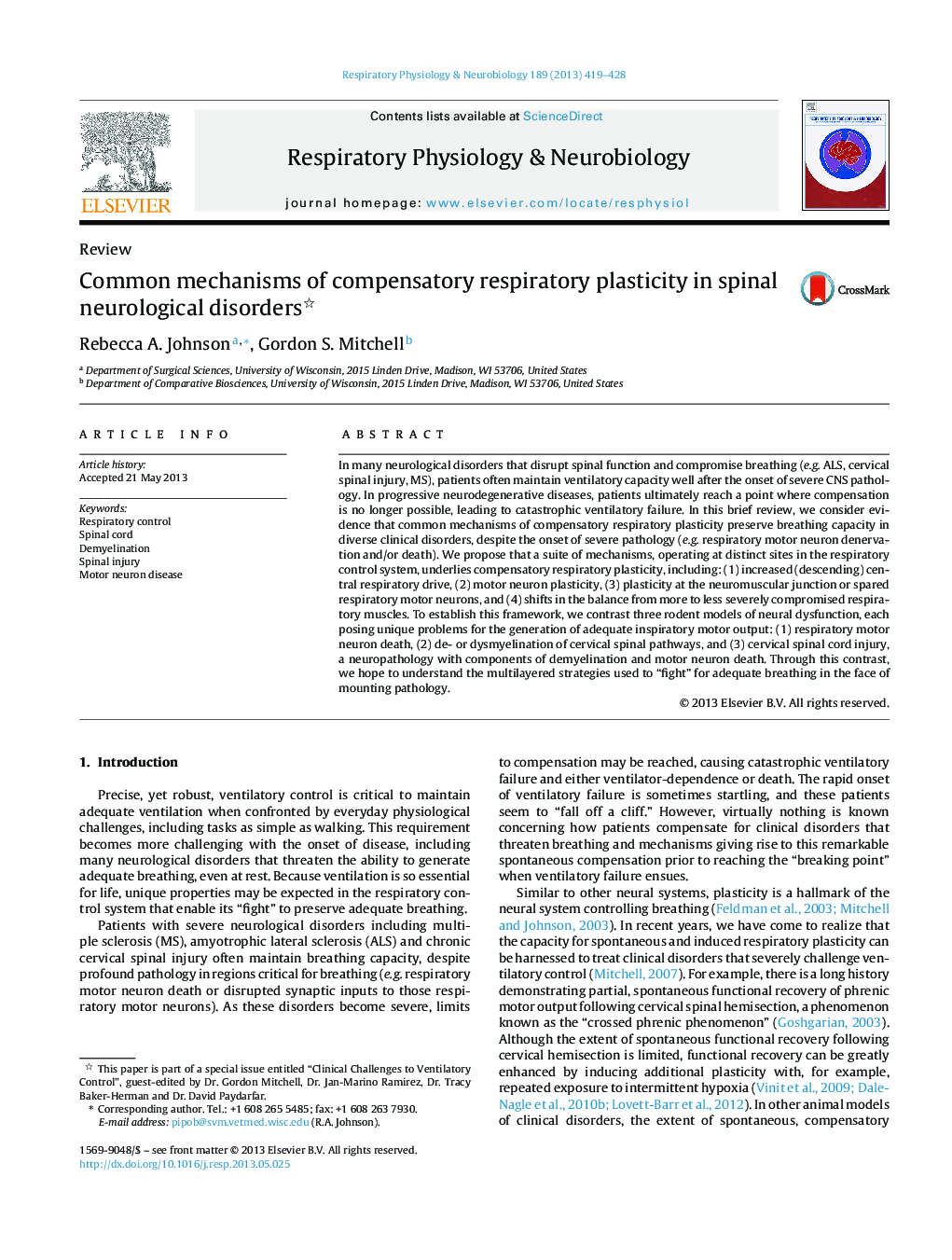| کد مقاله | کد نشریه | سال انتشار | مقاله انگلیسی | نسخه تمام متن |
|---|---|---|---|---|
| 5926027 | 1167332 | 2013 | 10 صفحه PDF | دانلود رایگان |

- Many neurological disorders disrupt spinal function and compromise breathing.
- Patients often maintain ventilatory capacity well after the onset of disease.
- Patients ultimately reach a point where compensation is no longer possible.
- We propose that a suite of mechanisms underlie compensatory respiratory plasticity.
- We contrast three unique rodent models of inspiratory motor dysfunction.
In many neurological disorders that disrupt spinal function and compromise breathing (e.g. ALS, cervical spinal injury, MS), patients often maintain ventilatory capacity well after the onset of severe CNS pathology. In progressive neurodegenerative diseases, patients ultimately reach a point where compensation is no longer possible, leading to catastrophic ventilatory failure. In this brief review, we consider evidence that common mechanisms of compensatory respiratory plasticity preserve breathing capacity in diverse clinical disorders, despite the onset of severe pathology (e.g. respiratory motor neuron denervation and/or death). We propose that a suite of mechanisms, operating at distinct sites in the respiratory control system, underlies compensatory respiratory plasticity, including: (1) increased (descending) central respiratory drive, (2) motor neuron plasticity, (3) plasticity at the neuromuscular junction or spared respiratory motor neurons, and (4) shifts in the balance from more to less severely compromised respiratory muscles. To establish this framework, we contrast three rodent models of neural dysfunction, each posing unique problems for the generation of adequate inspiratory motor output: (1) respiratory motor neuron death, (2) de- or dysmyelination of cervical spinal pathways, and (3) cervical spinal cord injury, a neuropathology with components of demyelination and motor neuron death. Through this contrast, we hope to understand the multilayered strategies used to “fight” for adequate breathing in the face of mounting pathology.
Journal: Respiratory Physiology & Neurobiology - Volume 189, Issue 2, 1 November 2013, Pages 419-428